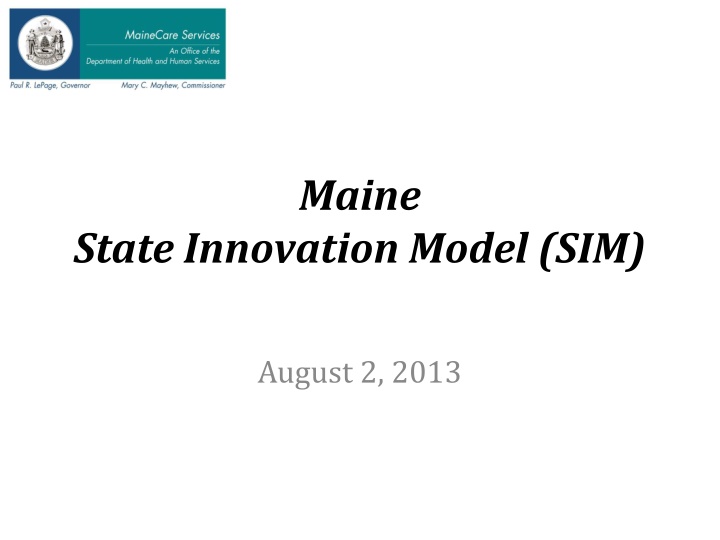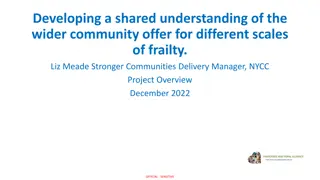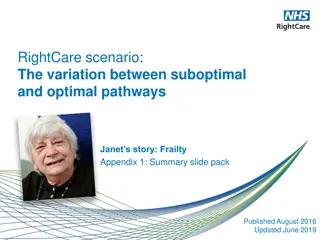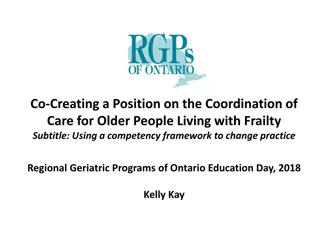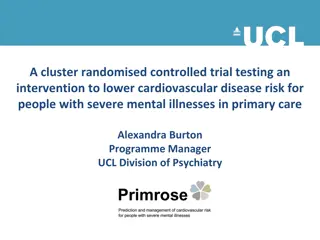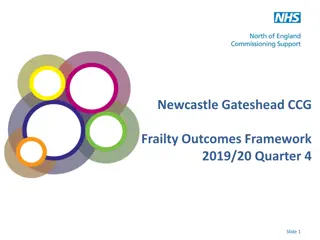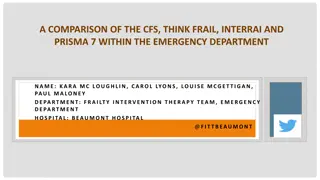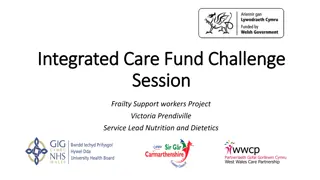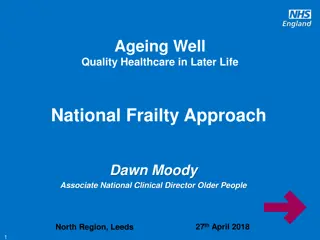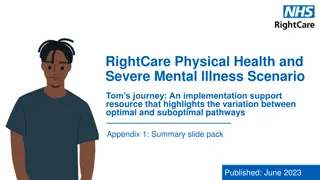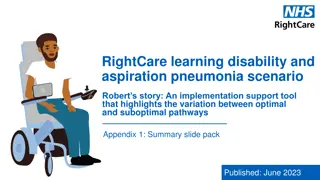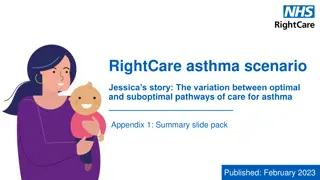Janet's Frailty Journey: From Suboptimal to Ideal
Janet's story highlights the impact of a suboptimal frailty care pathway, showcasing the need for improvements in prevention, care coordination, and support services. The scenario sheds light on the challenges faced by older adults with frailty and the consequences of inefficient healthcare delivery.
Download Presentation

Please find below an Image/Link to download the presentation.
The content on the website is provided AS IS for your information and personal use only. It may not be sold, licensed, or shared on other websites without obtaining consent from the author.If you encounter any issues during the download, it is possible that the publisher has removed the file from their server.
You are allowed to download the files provided on this website for personal or commercial use, subject to the condition that they are used lawfully. All files are the property of their respective owners.
The content on the website is provided AS IS for your information and personal use only. It may not be sold, licensed, or shared on other websites without obtaining consent from the author.
E N D
Presentation Transcript
Maine State Innovation Model (SIM) August 2, 2013
Current System Fee for Service Acute events Issue of the day Episodic care Fragmented care Driven by patient decision to access(who & when) Suboptimal utilization & cost 2
Maine State Innovation Model (SIM) Hypothesis By providing a cohesive, streamlined framework for health care reform and innovation which includes fostering engaged consumers and communities, transforming delivery systems to support accountable and integrated patient-centered primary care, and aligning public and private payment, accountability, quality and data infrastructure, Maine will realize improved quality of care and service while positively impacting health outcomes, population health and cost. 3
Multi-Payer ACOs Integrated Patient- Centered Care Multi-Payer Patient- Centered Medical Homes, Health Homes and Behavioral Health Homes Core measures for public reporting and value-based payment Leadership Consumer Engagement Community Linkages Workforce Education Health Information/ Tools Access and Analytics 4
Maine SIM Triple AIM GOALs: Public Reporting Maine Leadership Team Public Reporting Share best practices What s working, what s not? Reduce costs to National Average Improve health in key health categories Improve patient experience scores Increase practice experience participation Payer Populations MaineCare Medicare Maine Community Health Options Commercial Self-Insured Employers PAYMENT REFORM Chair: MHMC Data and Analytic Infrastructure Chair: HealthInfoNet SYSTEM DELIVERY REFORM Chair: Quality Counts VBP Development & Learning Health Care Cost Workgroup Behavioral HCC Workgroup VBID To support: Payment Reform System Delivery Reform Consumer Engagement PCMH, HH & ACO Learning Collaboratives Leadership Development Behavioral Health Collaborative MAINE CDC Patient Engagement Diabetes Prevention CHWPilot 5
Health Homes and Patient-Centered Medical Homes 1. Empower patients to own and manage their disease rather than be controlled by their disease 2. Support and educate patients between their visits to the primary care provider 3. Support patient engagement in disease management 4. Activation of community resources and support 5. Use of Community Care Teams to engage highest need patients 6. Enhance wellness 6
Accountable Community Organizations 1. Assumes responsibility for the coordination of the continuum of care 2. Controls cost by coordinating care once the patient has accessed the system 3. Uses data and information to monitor utilization and inform decision makers 4. Receives payer incentives for both decreased costs and improved health outcomes 7
SIMs Relationship to These Existing Models Allows for the development and implementation of the tools and resources necessary to continue transformation from current system to one based on Advanced Primary Care Model Data collection, analysis & reporting Workforce development Leadership development Market shift to fund a new delivery model Informed decision making by the patient and the system Population health interventions 8
SIMs Direct Impact PCMH and Health Home model value, based upon both outcome and cost measures, will result in continuation beyond the two year multi-payer pilot and federal enhanced match period. Other payers will join support for practices receiving Medicaid payments only. Access to health information for patients and providers will result in acceptance of shared decision making. Real-time transparent reporting. EHR incentives for Behavioral Health organizations. Population health initiatives become part of the healthcare delivery system in a seamless integrated fashion. Workforce and leadership development specific to transformation to new healthcare delivery model. 9
Timeline Pre- existing Jan- 13 Oct-13 Model Oct-14 Oct-15 Oct-16 SIM PCMH FQHC APC Health Homes Behav Health Homes Pioneer ACOs MSSP ACOs Commercial ACOs ACO MaineCare 10
Value of SIM A Bridge from Here to Tomorrow Helps transition from current fee for service to value-based purchasing. Helps transition process from providers intervening with patients on an acute and episodic basis to one in which the patient with a team of healthcare staff take ownership of their disease. Coordination of care replaces fragmentation of care. Patient becomes member of care team and is continuously engaged. Appropriate utilization and cost will be realized. 11
The Triple Aim is realized Improved patient experience Patient is a partner in managing his/her own health. Access to health information that is real time and transparent. Workforce that is trained to engage the patient in a new and more effective way. 12
The Triple Aim is Realized Improved quality of care and service Real time reporting empowers practices to engage the patients in a more meaningful and focused care plan. Leadership development and practice learning collaboratives lead to improved health outcomes. Integration of Behavioral Health and primary care. 13
The Triple Aim is Realized Reduced cost A shift in care from episodic to continuous through the primary provider results in less fragmentation. Market shift to match care delivery model decreases volume-based incentive. Utilization becomes more aligned with pattern of disease management. Cost reduced through less need to access high cost delivery services. 14
